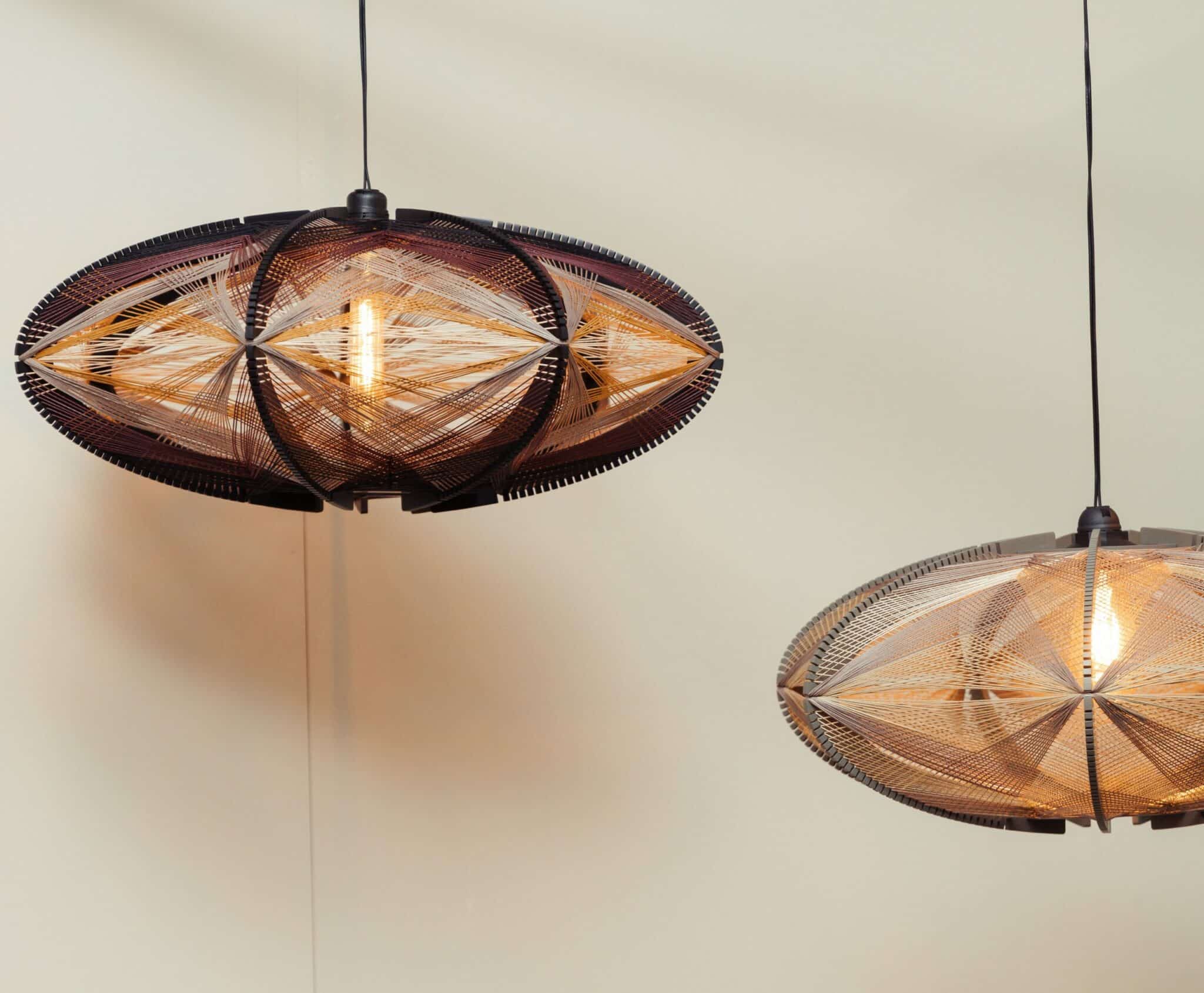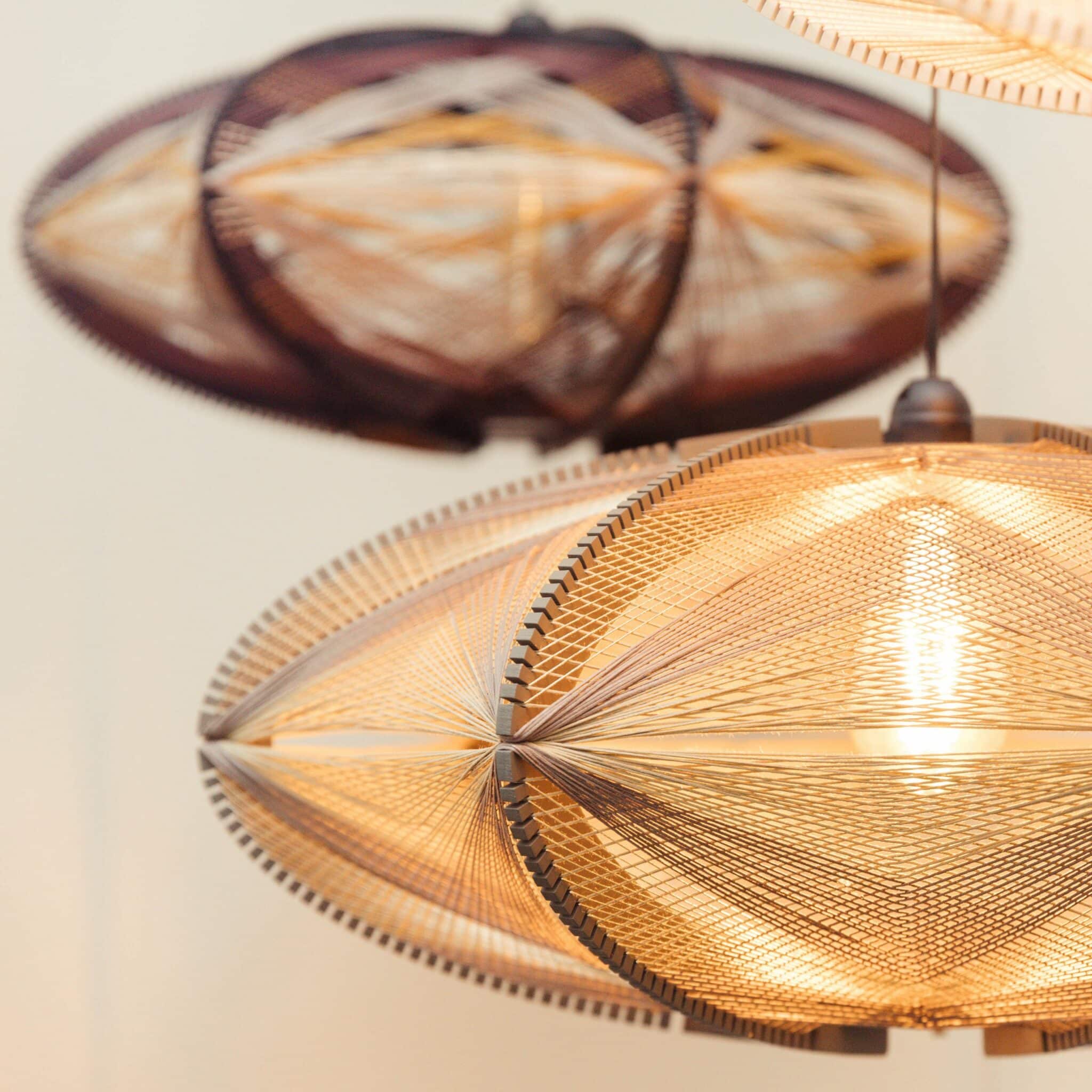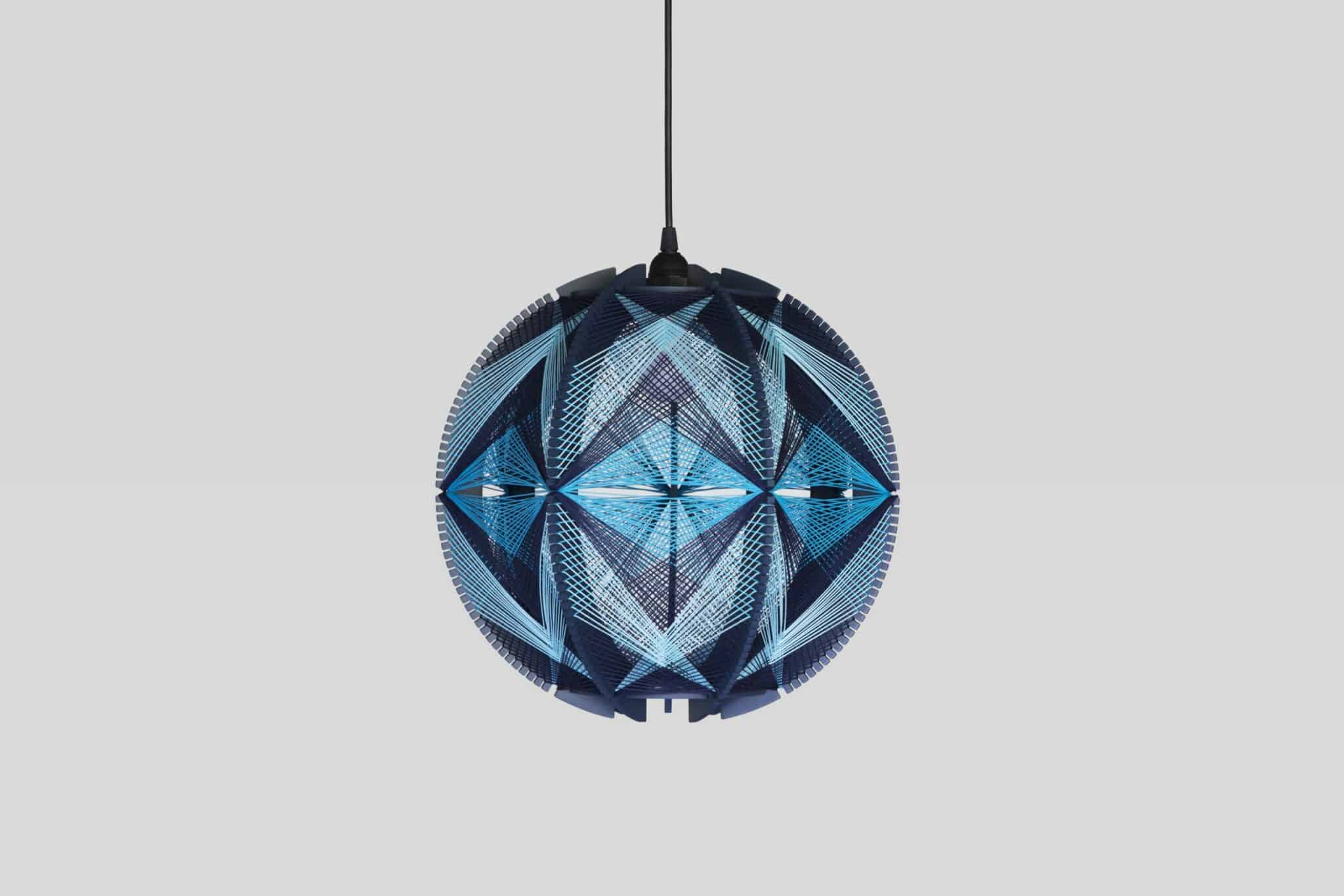Here’s the story of two Japanese friends, both born and raised in São Paulo, Brazil, where they’re based today, and their studio Design Kiiro.
In 2014, product designer Miki Inoue joined her architect friend Lea Yuko Ikeda to create their business Design Kiiro with the goal of designing, manually crafting and selling geometric light fixtures that resemble works of art.
Although they are based in São Paulo, Brazil, where they were born and raised—Miki’s parents were born in Japan, while Lea has a Japanese mother and a Japanese descendant Brazilian father—, they lived in Japan during part of their adult lives, can speak their ancestral language and are very connected to Japanese culture. And since, in Japan, light fixtures are everywhere, such as in temples, gardens, houses, shops and streets, they chose to focus on producing them.
In the Japanese language, kiiro (気 色) means, with some poetic license, “the energy of color”. Although Design Kiiro‘s light fixtures initially catch one’s immediate attention by their complex and intricate structure rather than their use of color, the latter is nonetheless a major part of the creative process behind each piece.
“In most cases, our light fixtures are custom made. We develop a piece for each customer and situation. Our clients send us images of the spaces where they want to put their future luminaries and then we make the color choices together. And these spaces range from nurseries to restaurants,” says Miki Inoue in an interview with ArchiExpo e-Magazine.
When the duo decided to focus their studio on releasing lighting fixtures, they spent the necessary time required to research technical solutions that would help them achieve a fresh, modern version of lights seen in the ’50s and ’60s which, back then, were made of acrylic and nylon threads.
The string art technique caught their eye. In this form of art, an arrangement of colored thread strung between fixed points produces geometric patterns that can allude to images or paintings, for example.
They began developing their products as prototypes made of cardboard, after which they used wood for a second prototype. For the final product, they chose MDF using reforested wood, shaped by a laser.
Photos by Danilo Koshimizu
“Laser provides a more precise cut and leaves no shavings. Accuracy is extremely important when making these light fixtures: any discrepancy, no matter how small, can make the strips not fit to one another or the wire patterns become uneven,” Miki told ArchiExpo e-magazine.
For the wires, they chose waxed cotton because of the wide color possibilities this option provides. However, in this department, Miki and Lea are still considering new possibilities, such as metallic wires with which they have already experimented.
Along with all the work involved in finding the ideal “formula” for the structure of the luminaires, the multitude of possible wire designs is another major technical challenge with these products. To add variety and individuality to the string layouts, the use of multiple overlaid patterns is employed. Different individual geometric shapes are interwoven to create different artistic effects both in the structure and color combinations.
One of the models sold by Design Kiiro, the round light fixture, for example, is offered in two different designs, while other models are available in up to three or even four options. In addition to the multiple shapes, the colors used in these wire designs are also very important.
Photos by Patricia Ikeda and Marcelo Fedrizzi.
“We do intense research on the color palettes that we can work within these pieces. Different colors bring different energies to a room and we need to always have that in mind,” says Lea.
The duo’s main sales outlet is via Instagram and the items can be shipped throughout Brazil—but not before going through the Furoshiki, an ancient Japanese technique of wrapping objects in fabrics.
In addition, the Design Kiiro logo was developed by the artist Hamilton Yokota (also known as Titi Freak) as an inkan, a type of stamped seal used in Japan that has the same value and significance as an actual written signature.
Design Kiiro luminaries have also drawn attention outside Brazil. Miki and Lea would very much like to export the light fixtures, but the bureaucracy involved and the export fees are still too high to make this commercially viable.
Although the duo sells some of its fixtures in selected stores (like arteira co.store and Mercado Itinerante at NK Store) and participates in important exhibitions and events (like Feira na Rosenbaum and Paralela Gift), the focus of the business is definitely on the internet.
Photos by Patricia Ikeda.
“Shops give our customers the opportunity to simply fall in love with our product and take it home immediately. This does happen. But in our opinion this market is moving more and more towards the internet, and this is all the more true when it comes to our case since the majority of our pieces are custom made,” adds Miki.
Business flourished in 2017 and has been in a securely consolidated position, but they were concerned about what effects the current coronavirus pandemic would have on their business, which have proved to be a surprise.
“We are experiencing a boom in our sales. Many customers say that they had been desiring a piece of our work for a long time and that now, being stuck at home the whole time, they have decided to finally purchase a luminaire. I guess that at this difficult moment we are all going through, people are looking more and more inside themselves – and to their homes. Our homes are and always will be our shelters in more ways than one,” says Miki.
Perhaps internet sales will finally push out the brick-and-mortar ways of the past. For a little while, anyway.















